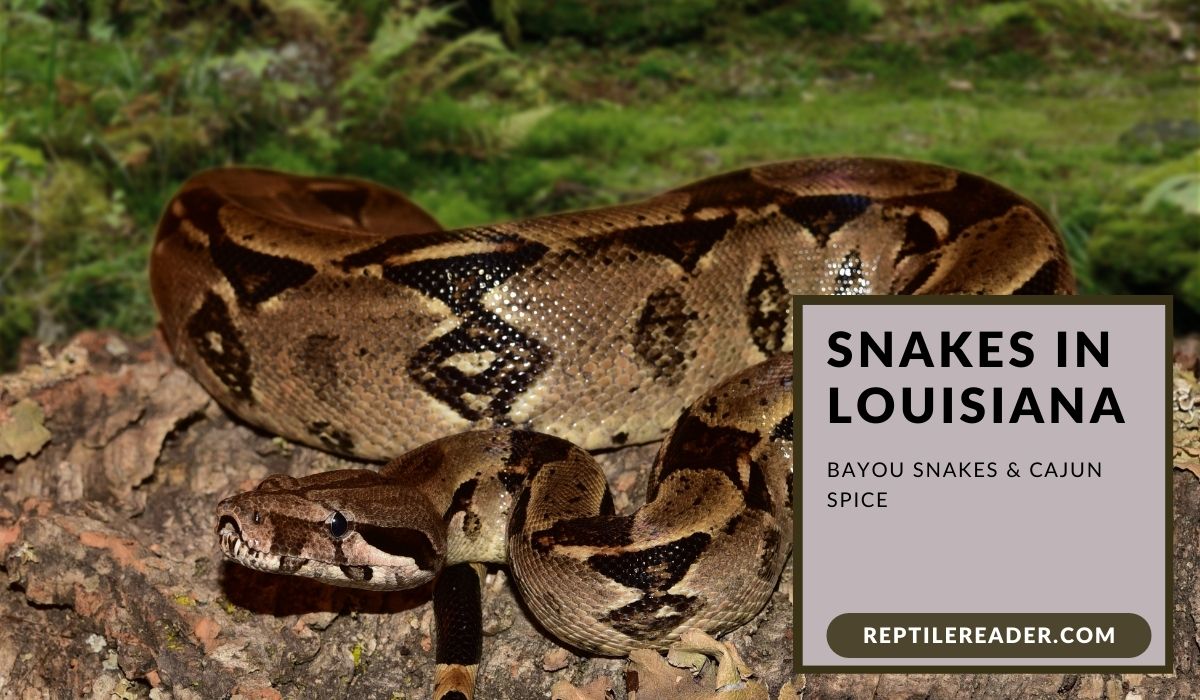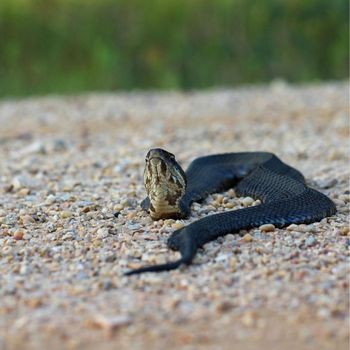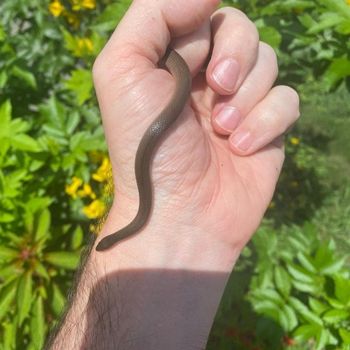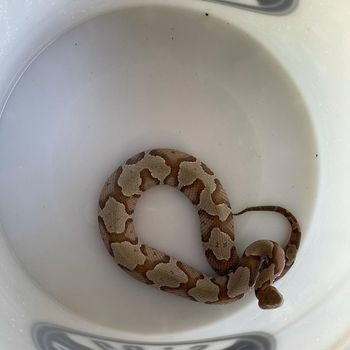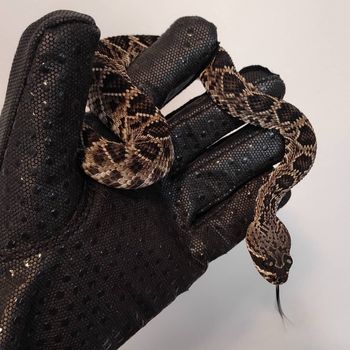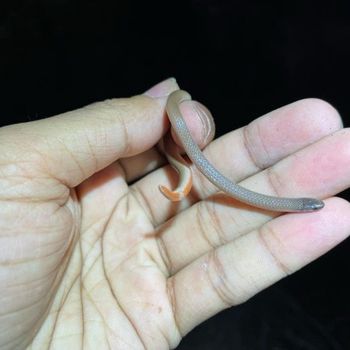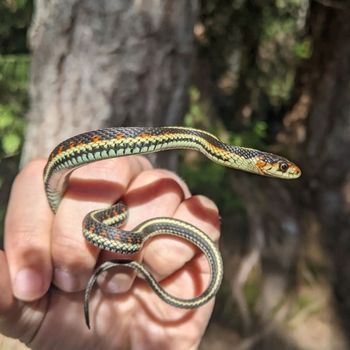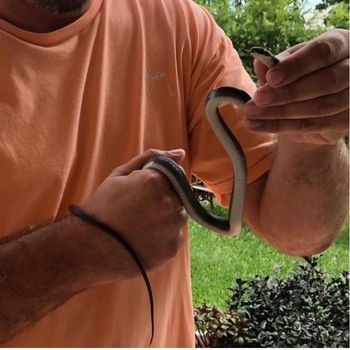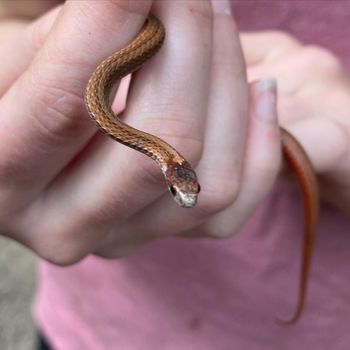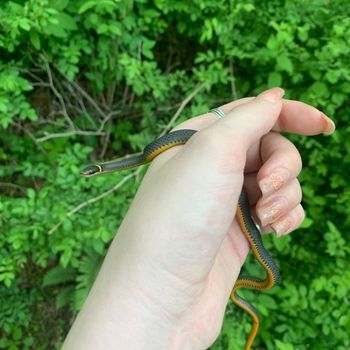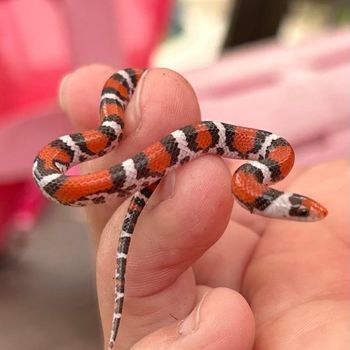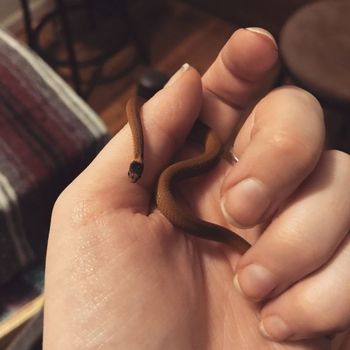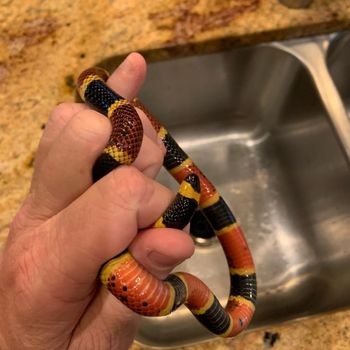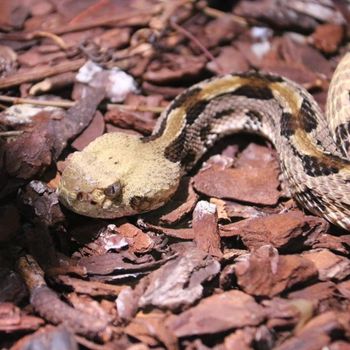Snakes in Louisiana: Bayou Snakes & Cajun Spice
Do you know what’s impressive about Louisiana’s wildlife? This southern gem of a state is not only known for its delicious crawfish and vibrant Mardi Gras but also for its amazing variety of snakes.
Believe it or not, there are actually 14 different species that you can find slithering around the bayous, forests, and swamps of Louisiana. Who knew there was such diversity in scale?
So, buckle up and grab your snake hooks, friends. It’s time to explore the fascinating world of serpents that call Louisiana home.
| # | Name | Details | Image |
| 1 | Cottonmouth (Agkistrodon piscivorus) |
| 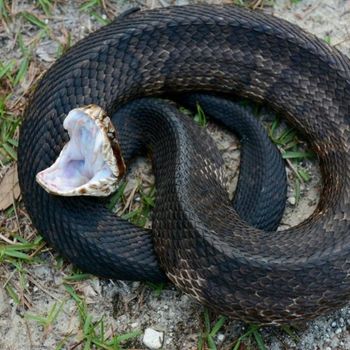 |
| 2 | Earth Snake (Virginia valeriae) |
| 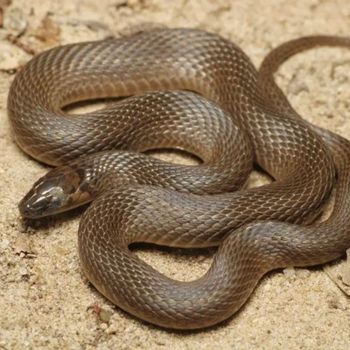 |
| 3 | Eastern Copperhead (Agkistrodon contortrix) |
| 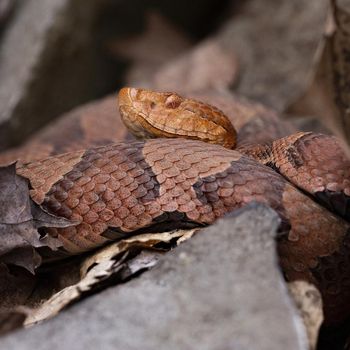 |
| 4 | Eastern Diamondback Rattlesnake (Crotalus adamanteus) |
| 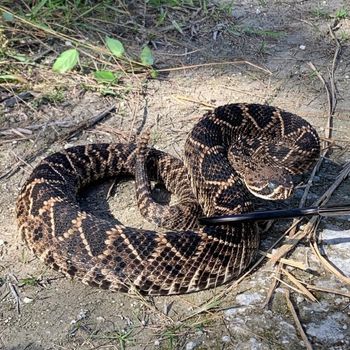 |
| 5 | Flat-headed Snake (Tantilla gracilis) |
| 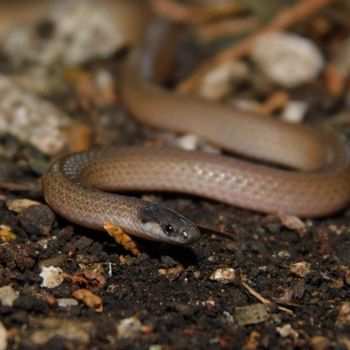 |
| 6 | Common Garter Snake (Thamnophis sirtalis) |
| 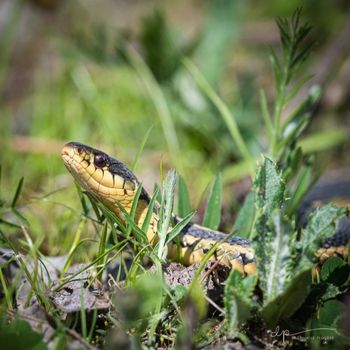 |
| 7 | North American Racer (Coluber constrictor) |
| 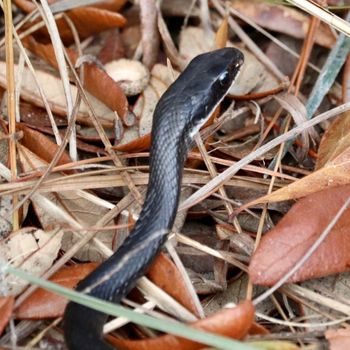 |
| 8 | Red-Bellied Snake (Storeria occipitomaculata) |
|  |
| 9 | Ringneck Snake (Diadophis punctatus) |
|  |
| 10 | Scarlet Snake (Cemophora coccinea) |
| 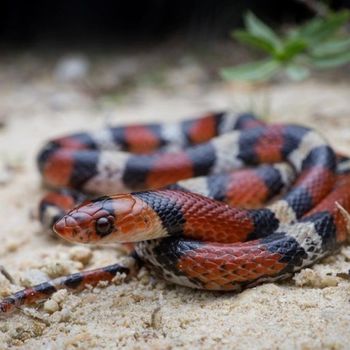 |
| 11 | Southeastern Crowned Snake (Tantilla coronata) |
| 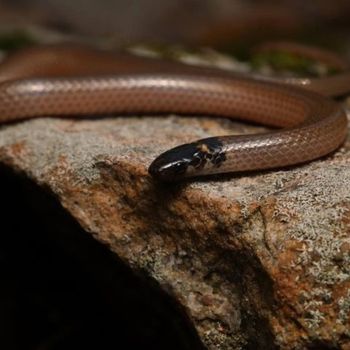 |
| 12 | Texas Coral Snake (Micrurus tener) |
| 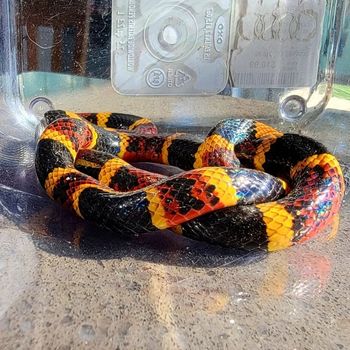 |
| 13 | Timber Rattlesnake (Crotalus horridus) |
|  |
| 14 | Western Wormsnake (Carphophis vermis) |
| 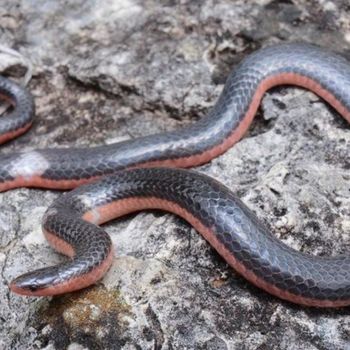 |
14 Snakes You Can Find in Louisiana
In the state of Louisiana, a fascinating array of serpents can be found slithering through its diverse landscapes. From venomous to harmless, each species has its unique story to tell. Below, we’ll explore the wonders of these often misunderstood creatures of Louisiana, from their natural habitats and behaviors to the challenges they face in our changing world.
1. Cottonmouth
- Scientific Name: Agkistrodon piscivorus
- Common Name: Cottonmouth, water moccasin
- Size: 30-48 inches (76-122 cm)
- Natural Habitat: Swamps, marshes, rivers, and ponds
- Color: Olive, brown, or black with dark bands
- Habitat: Swamps, marshes, rivers, and ponds
- Maximum Size: 30-48 inches (76-122 cm)
- Diet: Fish, amphibians, rodents, birds, and other reptiles
- Reproduction: Give birth to live young (ovoviviparous), 1-16 offspring
- Venom: Venomous, hemotoxic venom
- Conservation: Least concern
The Cottonmouth (Agkistrodon piscivorus), also known as Water Moccasin, is a venomous snake measuring 30-48 inches (76-122 cm) in length. It features an olive, brown, or black coloration with dark bands. These semi-aquatic, nocturnal reptiles inhabit swamps, marshes, rivers, and ponds. Notably aggressive when threatened, their diet consists of fish, amphibians, rodents, birds, and other reptiles. Cottonmouths give birth to live young (ovoviviparous), producing 1-16 offspring. Their venom is hemotoxic, but their conservation status remains of least concern.
2. Earth Snake
- Scientific Name: Virginia valeriae
- Common Name: Earth snake
- Size: 7-10 inches (18-25 cm)
- Natural Habitat: Woodlands, grasslands, and urban areas
- Color: Brown or gray with light speckling
- Habitat: Woodlands, grasslands, and urban areas
- Maximum Size: 7-10 inches (18-25 cm)
- Diet: Small invertebrates, mostly slugs and worms
- Reproduction: Lay eggs in clutches of 1-8
- Venom: Non-venomous
- Conservation: Least concern
The Virginia valeriae, commonly known as Earth Snake, is a small non-venomous reptile measuring 7-10 inches (18-25 cm) in length. Its brown or gray skin is adorned with light speckling, providing camouflage in its preferred habitats of woodlands, grasslands, and urban areas. Characterized by its secretive, fossorial, and nocturnal behavior, this elusive snake primarily feeds on small invertebrates such as slugs and worms. Earth Snakes reproduce by laying clutches of 1-8 eggs, and their conservation status is classified as least concern.
3. Eastern Copperhead
- Scientific Name: Agkistrodon contortrix
- Common Name: Eastern copperhead
- Size: Up to 3 feet (90 centimeters)
- Natural Habitat: Forests, swamps, and river bottoms
- Color: Reddish-brown with hourglass-shaped bands
- Habitat: Forests, swamps, and river bottoms
- Maximum Size: Up to 3 feet (90 centimeters)
- Diet: Small rodents, birds, frogs, and insects
- Reproduction: Live-bearing, 2-18 young per litter
- Venom: Venomous, hemotoxic venom
- Conservation: Least concern
The Eastern Copperhead (Agkistrodon contortrix) is a venomous snake that can grow up to 3 feet (90cm) in length. Its distinctive reddish-brown body features hourglass-shaped bands and prefers habitats such as forests, swamps, and river bottoms of Louisiana. These nocturnal, terrestrial creatures primarily feed on small rodents, birds, frogs, and insects. Eastern Copperheads are live-bearing, with litters ranging from 2-18 young. Their hemotoxic venom can be dangerous, but their conservation status is considered least concern.
4. Eastern Diamondback Rattlesnake
- Scientific Name: Crotalus adamanteus
- Common Name: Eastern diamondback rattlesnake
- Size: Up to 8 feet (2.4 meters)
- Natural Habitat: Dry forests, scrub, and coastal areas
- Color: Brown, yellow, and gray with diamond-shaped patterns
- Habitat: Dry forests, scrub, and coastal areas
- Maximum Size: Up to 8 feet (2.4 meters)
- Diet: Rodents, rabbits, small mammals, and birds
- Reproduction: Ovoviviparous, giving birth to 6-21 live young
- Venom: Venomous, potentially dangerous to humans
- Conservation: Least concern
The Eastern Diamondback Rattlesnake (Crotalus adamanteus) is a large, venomous serpent found primarily in dry forests, scrublands, and coastal areas. Reaching up to 8 feet (2.4 meters) in length, they exhibit a distinct coloration of brown, yellow, and gray with diamond-shaped patterns. These nocturnal and terrestrial predators primarily feed on rodents, rabbits, small mammals, and birds. Eastern Diamondbacks are ovoviviparous, giving birth to 6-21 live young. Although their venom is potentially dangerous to humans, their conservation status remains listed as least concern.
5. Flat-headed Snake
- Scientific Name: Tantilla gracilis
- Common Name: Flathead snake
- Size: 7-12 inches (18-30 cm)
- Natural Habitat: Grasslands, woodlands, and rocky areas
- Color: Brown or reddish-brown with black head and yellow neck band
- Habitat: Grasslands, woodlands, and rocky areas
- Maximum Size: 7-12 inches (18-30 cm)
- Diet: Centipedes and other small invertebrates
- Reproduction: Lay eggs, 1-3 per clutch
- Venom: Non-venomous
- Conservation: Least concern
The Flat-headed Snake (Tantilla gracilis) is a small, non-venomous reptile measuring 7-12 inches in length. It sports a brown or reddish-brown body with a distinct black head and a yellow neck band. Native to grasslands, woodlands, and rocky areas, this nocturnal and secretive snake primarily feeds on centipedes and other small invertebrates. Flat-headed snakes reproduce by laying eggs, with each clutch consisting of 1-3 eggs. Currently, their conservation status is classified as least concern.
6. Common Garter Snake
- Scientific Name: Thamnophis sirtalis
- Common Name: Common garter snake
- Size: Up to 3-4 feet (0.9-1.2 meters)
- Natural Habitat: Wet and moist habitats, including marshes, fields, and forests
- Color: Green or brown with three yellow stripes
- Habitat: Wet and moist habitats, including marshes, fields, and forests
- Maximum Size: Up to 3-4 feet (0.9-1.2 meters)
- Diet: Frogs, fish, earthworms, and small mammals
- Reproduction: Gives birth to live young, 10-40 per litter
- Venom: Mildly venomous, harmless to humans
- Conservation: Least concern
The Common Garter Snake (Thamnophis sirtalis) is a 3-4 feet (0.9-1.2 meters) non-aggressive and mildly venomous reptile with a green or brown body and three yellow stripes. Inhabiting wet and moist habitats like marshes, fields, and forests of Louisiana, these diurnal snakes hibernate during winter to escape the cold. Their diet consists of frogs, fish, earthworms, and small mammals. Uniquely, these snakes birth live young, producing 10-40 per litter. Although venomous, they pose no threat to humans and are currently listed as a species of least concern for conservation.
7. North American Racer
- Scientific Name: Coluber constrictor
- Common Name: North american racer
- Size: Up to 6 feet (1.8 meters)
- Natural Habitat: Grasslands, meadows, forests, and farmlands
- Color: Blue, gray, or greenish with a white or yellow underside
- Habitat: Grasslands, meadows, forests, and farmlands
- Maximum Size: Up to 6 feet (1.8 meters)
- Diet: Small mammals, birds, frogs, and insects
- Reproduction: Lay eggs in clutches of 4-30
- Venom: Non-venomous
- Conservation: Least concern
The North American Racer (Coluber constrictor) is a non-venomous snake species that can reach up to 6 feet (1.8 meters) in length. Characterized by blue, gray, or greenish scales and a white or yellow underside, these diurnal and terrestrial creatures inhabit grasslands, meadows, forests, and farmlands. Known for their fast-moving behavior, they primarily feed on small mammals, birds, frogs, and insects. North American Racers reproduce by laying eggs in clutches of 4-30, and their conservation status is listed as least concern.
8. Red-Bellied Snake
- Scientific Name: Storeria occipitomaculata
- Common Name: Red-bellied snake
- Size: 8-16 inches (20-41 cm)
- Natural Habitat: Forests, woodlands, and wetlands
- Color: Gray or brown with a red or orange belly
- Habitat: Forests, woodlands, and wetlands
- Maximum Size: 8-16 inches (20-41 cm)
- Diet: Slugs, snails, and earthworms
- Reproduction: Live-bearing; 4-21 offspring per litter
- Venom: Non-venomous
- Conservation: Least concern
The Red-Bellied Snake (Storeria occipitomaculata) is a small, non-venomous snake measuring 8-16 inches (20-41 cm) in length. They are gray or brown with a distinctive red or orange belly. Mostly found in forests, woodlands, and wetlands of Louisiana, these nocturnal and secretive creatures primarily feed on slugs, snails, and earthworms. As live-bearing reptiles, they produce 4-21 offspring in each litter. With a conservation status of “Least Concern,” this terrestrial snake presents no significant threat to humans.
9. Ringneck Snake
- Scientific Name: Diadophis punctatus
- Common Name: Ringneck snake
- Size: 12-15 inches (30-38 centimeters)
- Natural Habitat: Forests, grasslands, and urban areas
- Color: Gray or dark brown with yellow or orange ring around the neck
- Habitat: Forests, grasslands, and urban areas
- Maximum Size: 12-15 inches (30-38 centimeters)
- Diet: Small invertebrates such as insects, worms, and slugs
- Reproduction: Lay eggs in clutches of 3-10
- Venom: Mildly venomous, but not harmful to humans
- Conservation: Least concern
The Ringneck Snake (Diadophis punctatus) is a small, mildly venomous serpent, measuring 12-15 inches (30-38 centimeters) in length. Exhibiting a gray or dark brown coloration with a distinct yellow or orange ring around its neck, this species prefers habitats including forests, grasslands, and urban areas. As nocturnal, secretive creatures, Ringneck Snakes are found hiding under rocks or logs, feeding on small invertebrates such as insects, worms, and slugs. Reproducing by laying 3-10 eggs per clutch, this snake is presently classified as least concern in terms of conservation status.
10. Scarlet Snake
- Scientific Name: Cemophora coccinea
- Common Name: Scarlet snake
- Size: Up to 20-30 inches (50-76 cm)
- Natural Habitat: Forests, grasslands, and suburban areas
- Color: Red or orangish with black bands and a white or yellowish underbelly
- Habitat: Forests, grasslands, and suburban areas
- Maximum Size: Up to 20-30 inches (50-76 cm)
- Diet: Reptile eggs, small rodents, and lizards
- Reproduction: Lays eggs in clutches of 3-8
- Venom: Non-venomous
- Conservation: Least concern
The Scarlet Snake (Cemophora coccinea) is a non-venomous, nocturnal reptile found in forests, grasslands, and suburban areas. Measuring up to 20-30 inches (50-76 cm) in length, it features striking red or orangish scales with black bands and a white or yellowish underbelly. This burrowing snake has a diet consisting of reptile eggs, small rodents, and lizards. Females lay eggs in clutches of 3-8. With a conservation status of least concern, the Scarlet Snake continues to thrive in its habitats.
11. Southeastern Crowned Snake
- Scientific Name: Tantilla coronata
- Common Name: Southeastern crowned snake
- Size: Up to 10 inches (25 centimeters)
- Natural Habitat: Wooded areas, under rocks, logs, or leaf litter
- Color: Blackish-brown with a yellowish-white collar
- Habitat: Wooded areas, under rocks, logs, or leaf litter
- Maximum Size: Up to 10 inches (25 centimeters)
- Diet: Centipedes, beetle larvae, and small insects
- Reproduction: Lay eggs in clutches of 2-4
- Venom: Non-venomous
- Conservation: Least concern
The Southeastern Crowned Snake (Tantilla coronata) is a small, non-venomous serpent, which measures up to 10 inches (25 cm) in length. Sporting a blackish-brown body with a distinct yellowish-white collar, these reptiles inhabit wooded areas, hiding beneath rocks, logs, and leaf litter. Characterized by their nocturnal and secretive behavior, they primarily feed on centipedes, beetle larvae, and small insects. Southeastern Crowned Snakes reproduce by laying clutches of 2-4 eggs, and their conservation status is marked as Least Concern.
12. Texas Coral Snake
- Scientific Name: Micrurus tener
- Common Name: Texas coral snake
- Size: Up to 3 feet (0.9 meters)
- Natural Habitat: Woodlands, prairies, and deserts
- Color: Red, black, and yellow bands
- Habitat: Woodlands, prairies, and deserts
- Maximum Size: Up to 3 feet (0.9 meters)
- Diet: Other small reptiles and amphibians
- Reproduction: Lay eggs in clutches of 3-10
- Venom: Highly venomous
- Conservation: Least concern
The Texas Coral Snake (Micrurus tener) is a brilliantly colored, venomous reptile known for its vibrant red, black, and yellow bands. Growing up to 3 feet (0.9 meters) long, they inhabit woodlands, prairies, and deserts. As a nocturnal and secretive species, they primarily feed on small reptiles and amphibians. Reproducing via egg-laying, they produce clutches of 3-10 eggs. Although highly venomous, their conservation status is listed as “least concern.”
13. Timber Rattlesnake
- Scientific Name: Crotalus horridus
- Common Name: Timber rattlesnake
- Size: Up to 6 feet (1.8 meters)
- Natural Habitat: Forests, mixed woodlands, and rocky hillsides
- Color: Yellow, brown, gray, or black with dark bands
- Habitat: Forests, mixed woodlands, and rocky hillsides
- Maximum Size: Up to 6 feet (1.8 meters)
- Diet: Rodents, birds, and small mammals
- Reproduction: Viviparous, giving birth to 4-14 live young
- Venom: Hemotoxic venom
- Conservation: Least concern
The Timber Rattlesnake, scientifically known as Crotalus horridus, is a solitary, ambush predator that can grow up to 6 feet (1.8 meters) in length. It comes in various colors, including yellow, brown, gray, or black with dark bands, and inhabits forests, mixed woodlands, and rocky hillsides. Its diet consists of rodents, birds, and small mammals. Unlike most snakes, the Timber Rattlesnake is viviparous, giving birth to 4-14 live young. It possesses hemotoxic venom, and its conservation status is currently listed as least concern.
14. Western Wormsnake
- Scientific Name: Carphophis vermis
- Common Name: Western wormsnake
- Size: Up to 14 inches (35.5 cm)
- Natural Habitat: Deciduous forests, grasslands, and suburban areas with moist soil
- Color: Brown to black on the back and pink or light brown on the belly
- Habitat: Deciduous forests, grasslands, and suburban areas with moist soil
- Maximum Size: Up to 14 inches (35.5 cm)
- Diet: Earthworms and other soft-bodied invertebrates
- Reproduction: Lay eggs in clutches of 1-8
- Venom: Non-venomous
- Conservation: Least concern
The Western Wormsnake (Carphophis vermis) is a non-venomous, small-sized reptile reaching up to 14 inches (35.5 cm) in length. It exhibits a distinct color pattern of brown-to-black on its back and pink or light brown on its belly. Inhabiting deciduous forests, grasslands, and moist suburban areas, this elusive, nocturnal creature primarily burrows underground and feeds on earthworms and soft-bodied invertebrates. Western Wormsnakes lay small egg clutches (1-8) and have a conservation status of Least Concern.
Nearby States:
Final Words
All the 14 snakes have truly opened our eyes to the fascinating world of snakes found in Louisiana. Who knew there were so many different types of these slithering reptiles, each with their own unique characteristics and habitats?
Not only did we get a chance to learn about some of the more common and well-known species, but we also delved into the lesser-known and often misunderstood ones.
So, the next time you’re out and about in Louisiana, keep an eye out for these incredible creatures, and let’s continue to appreciate and protect the diverse wildlife that makes our world so interesting!
Do Copperheads in Louisiana Use Noise as a Defense Mechanism in the Bayou?
Copperheads are commonly found in Louisiana’s bayous, but they don’t rely on sound to ward off threats. Instead, they stay still, camouflaging into their environment. While some snakes may rattle or hiss, copperhead noise behavior is virtually nonexistent, focusing more on stealth as their primary defense mechanism.
Are There Similarities Between Bayou Snakes in Louisiana and Serpents in West Virginia?
While both the bayou snakes in Louisiana and the serpents in West Virginia are non-venomous, they have some differences. Louisiana’s bayou snakes tend to be larger and more colorful, while the snakes in west virginia are smaller and more secretive. However, both play a crucial role in their respective ecosystems.

